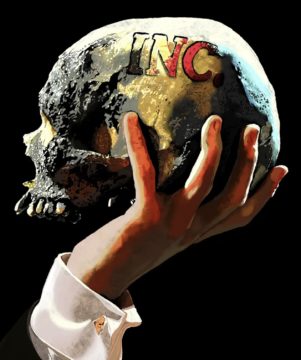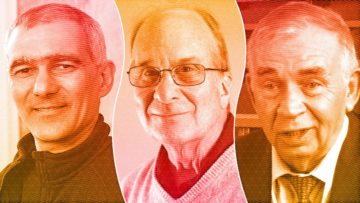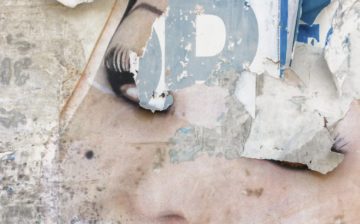Becky Ferreira in Vice:
 Are we living in a simulation? It’s a trippy idea that has inspired many classic tales, from Plato’s Allegory of the Cave to The Matrix franchise, but it is also increasingly becoming a subject of genuine scientific debate and inquiry.
Are we living in a simulation? It’s a trippy idea that has inspired many classic tales, from Plato’s Allegory of the Cave to The Matrix franchise, but it is also increasingly becoming a subject of genuine scientific debate and inquiry.
A scientist has now proposed that evidence of this so-called “simulation hypothesis” might be hidden in laws that govern information, such as the genetic information in our DNA or digital information stored in computers, according to a new study. The results of the research suggest that different information systems undergo the same process of minimization over time, almost akin to the way a computer compresses and optimizes its data, a finding that could support the idea that the universe is a simulation.
More here.

 In solid cancers, cellular behaviors such as motility and invasiveness are well characterized contributors to poor prognosis and cancer spread. Scientists pay close attention to a process called
In solid cancers, cellular behaviors such as motility and invasiveness are well characterized contributors to poor prognosis and cancer spread. Scientists pay close attention to a process called  SINCE RUSSIA’S FULL-SCALE INVASION of Ukraine in February 2022, Ukrainian cultural figures have been grappling with Theodor Adorno’s declaration: “To write poetry after Auschwitz is barbaric.” After the massacre at Bucha, the siege of Mariupol, and the seemingly endless stream of war crimes revealed every time a Ukrainian hamlet is liberated, artists, musicians, and writers are left wondering if they can possibly create something meaningful out of the barbarism—and, perhaps more pertinently, if they should. Theater critic John Freedman’s new anthology A Dictionary of Emotions in a Time of War: 20 Short Works by Ukrainian Playwrights is a response to this question.
SINCE RUSSIA’S FULL-SCALE INVASION of Ukraine in February 2022, Ukrainian cultural figures have been grappling with Theodor Adorno’s declaration: “To write poetry after Auschwitz is barbaric.” After the massacre at Bucha, the siege of Mariupol, and the seemingly endless stream of war crimes revealed every time a Ukrainian hamlet is liberated, artists, musicians, and writers are left wondering if they can possibly create something meaningful out of the barbarism—and, perhaps more pertinently, if they should. Theater critic John Freedman’s new anthology A Dictionary of Emotions in a Time of War: 20 Short Works by Ukrainian Playwrights is a response to this question. For more than a century, researchers have known that people are generally very good at eyeballing quantities of four or fewer items. But performance at sizing up numbers drops markedly — becoming slower and more prone to error — in the face of larger numbers.
For more than a century, researchers have known that people are generally very good at eyeballing quantities of four or fewer items. But performance at sizing up numbers drops markedly — becoming slower and more prone to error — in the face of larger numbers. The parting gift, I expect, of the bankrupt liberalism of the Democratic Party will be a Christianized fascist state. The
The parting gift, I expect, of the bankrupt liberalism of the Democratic Party will be a Christianized fascist state. The  The 20-year-old has become one of the world’s best-known campaigners against climate change. She first learned about climate change when she was eight. At the age of 11 or 12, she started suffering from depression, according to her father, Svante: “She stopped talking… she stopped going to school,” he said. Around the same time she was diagnosed with Asperger’s syndrome, a form of autism.
The 20-year-old has become one of the world’s best-known campaigners against climate change. She first learned about climate change when she was eight. At the age of 11 or 12, she started suffering from depression, according to her father, Svante: “She stopped talking… she stopped going to school,” he said. Around the same time she was diagnosed with Asperger’s syndrome, a form of autism. Hamas’ attack on Israel this weekend—including the indiscriminate murder of Israelis—has led to a spiraling of an already dire situation in the region. The recent declaration of war, and the subsequent military actions in Gaza, has set off a crisis in an already calamitous conflict, particularly for the 2 million Gazans—half of whom are children—who have been living in one of the mostly densely populated places on Earth. The
Hamas’ attack on Israel this weekend—including the indiscriminate murder of Israelis—has led to a spiraling of an already dire situation in the region. The recent declaration of war, and the subsequent military actions in Gaza, has set off a crisis in an already calamitous conflict, particularly for the 2 million Gazans—half of whom are children—who have been living in one of the mostly densely populated places on Earth. The  A blood draw is one the most mundane clinical tests. It can also be a Rosetta stone for decoding genetic information and linking DNA typos to health and disease. This week,
A blood draw is one the most mundane clinical tests. It can also be a Rosetta stone for decoding genetic information and linking DNA typos to health and disease. This week,  The short film is a neglected form of American entertainment, prevalent — you can find them most anywhere, and pretty much every filmmaker
The short film is a neglected form of American entertainment, prevalent — you can find them most anywhere, and pretty much every filmmaker  Imagine a nanocrystal so minuscule that it behaves like an atom.
Imagine a nanocrystal so minuscule that it behaves like an atom.  Dread gives way to the cold stab of terrible certainty as it hits you: they aren’t people. They’re bots. The Internet is all bots. Under your nose, the Internet of real people has gradually shifted into a digital world of shadow puppets. They look like people, they act like people, but there are no people left. Well, there’s you and maybe a few others, but you can’t tell the difference, because the bots wear a million masks. You might be alone, and have been for a while. It’s a horror worse than blindness: the certainty that your vision is clear but there is no genuine world to be seen.
Dread gives way to the cold stab of terrible certainty as it hits you: they aren’t people. They’re bots. The Internet is all bots. Under your nose, the Internet of real people has gradually shifted into a digital world of shadow puppets. They look like people, they act like people, but there are no people left. Well, there’s you and maybe a few others, but you can’t tell the difference, because the bots wear a million masks. You might be alone, and have been for a while. It’s a horror worse than blindness: the certainty that your vision is clear but there is no genuine world to be seen. The federal government believes that the threat of violence and major civil disturbances around the 2024 U.S. presidential election is so great that it has quietly created a new category of extremists that it seeks to track and counter:
The federal government believes that the threat of violence and major civil disturbances around the 2024 U.S. presidential election is so great that it has quietly created a new category of extremists that it seeks to track and counter:  On July 16, 1945, J. Robert Oppenheimer stood in the Jornada del Muerto desert in New Mexico, watching a second sunrise—that caused by the detonation of the world’s first nuclear explosion, marking the dawn of the atomic age. Standing by his side was I.I. Rabi, another Jewish physicist. “It was a vision,” Rabi later said of that explosion. “Then, a few minutes afterward, I had gooseflesh all over me when I realized what this meant for the future of humanity.” If Oppenheimer was the Jewish father of the bomb, it had a large assortment of Jewish uncles (and at least one aunt, Lise Meitner), including Edward Teller, Leo Szilard, Niels Bohr, Felix Bloch, Hans Bethe, John von Neuman, Rudolf Peierls, Franz Eugene Simon, Hans Halban, Joseph Rotblatt, Stanislav Ulam, Richard Feynman, and Eugene Wigner.
On July 16, 1945, J. Robert Oppenheimer stood in the Jornada del Muerto desert in New Mexico, watching a second sunrise—that caused by the detonation of the world’s first nuclear explosion, marking the dawn of the atomic age. Standing by his side was I.I. Rabi, another Jewish physicist. “It was a vision,” Rabi later said of that explosion. “Then, a few minutes afterward, I had gooseflesh all over me when I realized what this meant for the future of humanity.” If Oppenheimer was the Jewish father of the bomb, it had a large assortment of Jewish uncles (and at least one aunt, Lise Meitner), including Edward Teller, Leo Szilard, Niels Bohr, Felix Bloch, Hans Bethe, John von Neuman, Rudolf Peierls, Franz Eugene Simon, Hans Halban, Joseph Rotblatt, Stanislav Ulam, Richard Feynman, and Eugene Wigner. NEARLY ALL REVOLUTIONS
NEARLY ALL REVOLUTIONS The 2023 Sveriges Riksbank Prize in Economic Sciences — the ‘economics Nobel’ — has been awarded to economic historian Claudia Goldin at Harvard University in Cambridge, Massachusetts, “for having advanced our understanding of women’s labour market outcomes”. Goldin’s work has helped to explain why women have been under-represented in the labour market for at least the past two centuries, and why even today they continue to earn less than men on average (by around 13%).
The 2023 Sveriges Riksbank Prize in Economic Sciences — the ‘economics Nobel’ — has been awarded to economic historian Claudia Goldin at Harvard University in Cambridge, Massachusetts, “for having advanced our understanding of women’s labour market outcomes”. Goldin’s work has helped to explain why women have been under-represented in the labour market for at least the past two centuries, and why even today they continue to earn less than men on average (by around 13%).